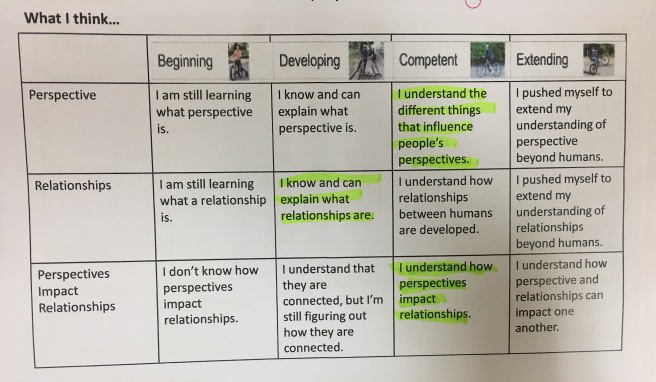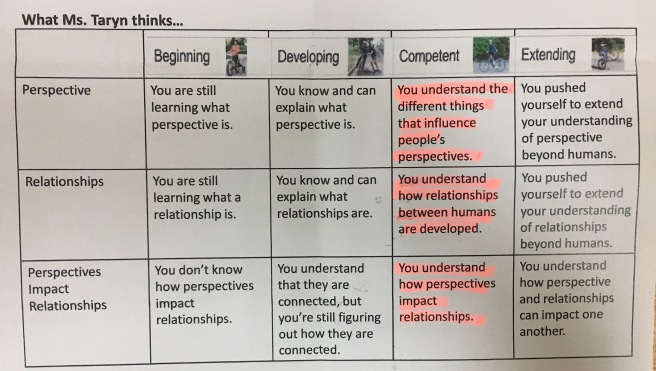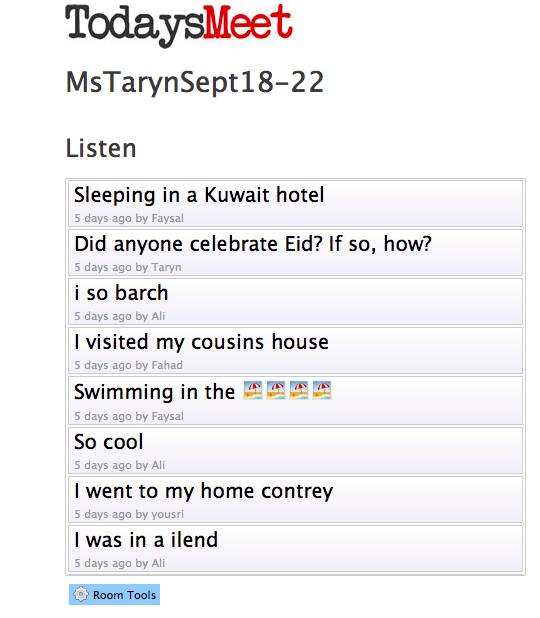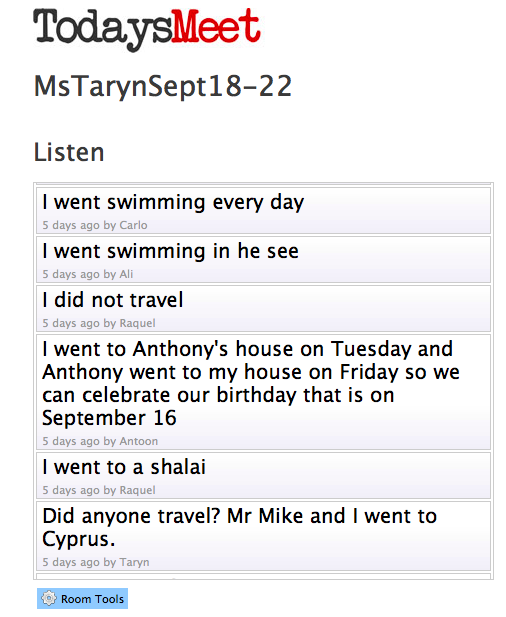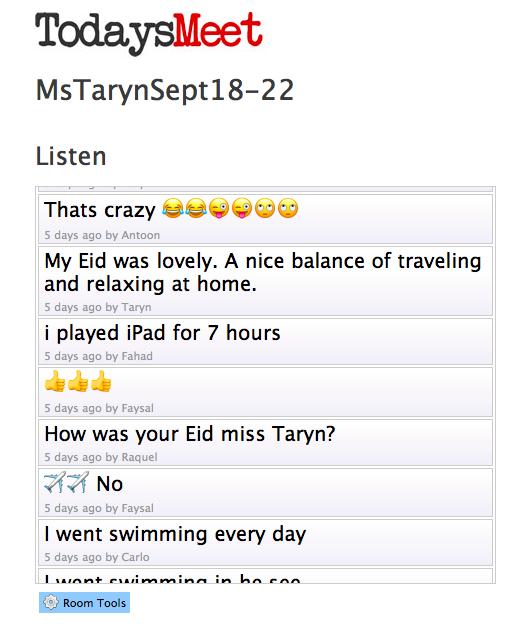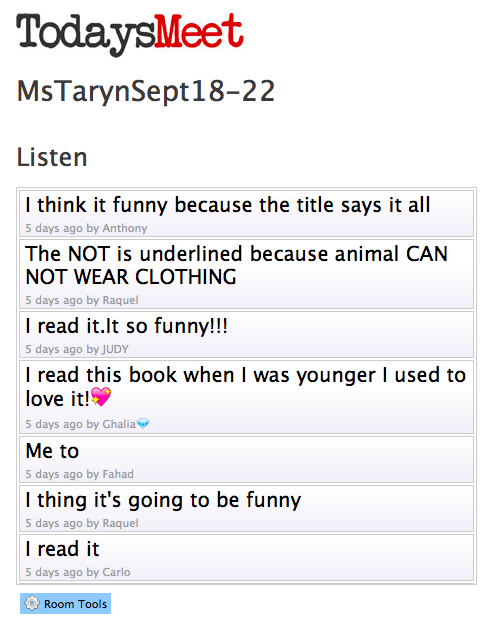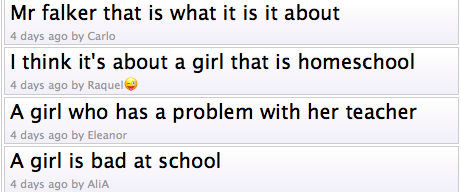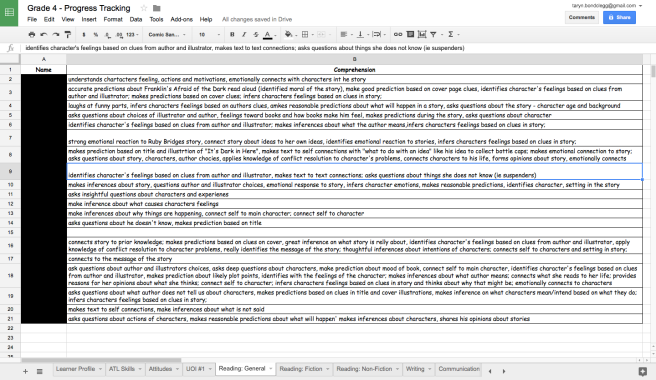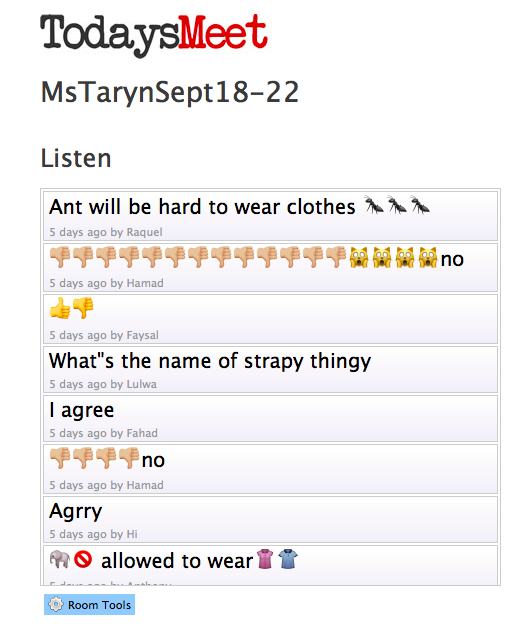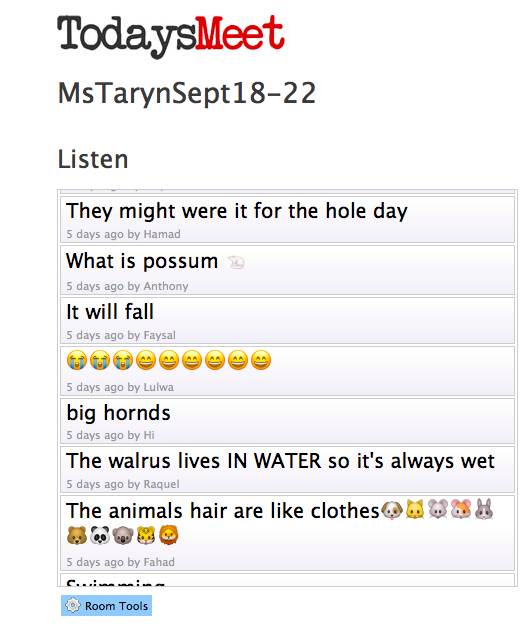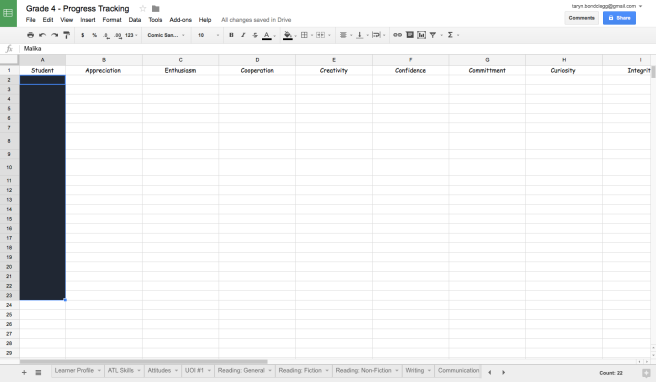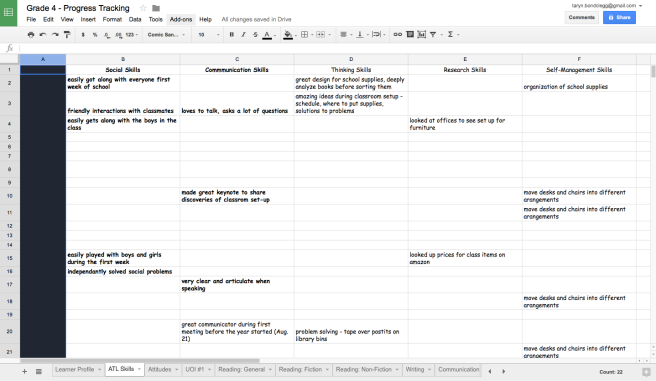I strongly believe that assessment is something that should be done with students, not something that is done to students. So this year, being back in the classroom, I wanted to put that belief into practice. We have just finished our first Unit of Inquiry and here is how our summative assessment went.
- An open discussion about assessment
As a class we discussed the difficulty of trying to measure a human’s learning and I shared that there are many different approaches to trying to figure out what a student has learned in school.
2. Trying out multiple approaches
We discussed a handful of approaches for measuring learning and then we tried each of them out within the context of our unit.
Students showed how their thinking changed throughout the unit by completing “I used to think… Now I think…”
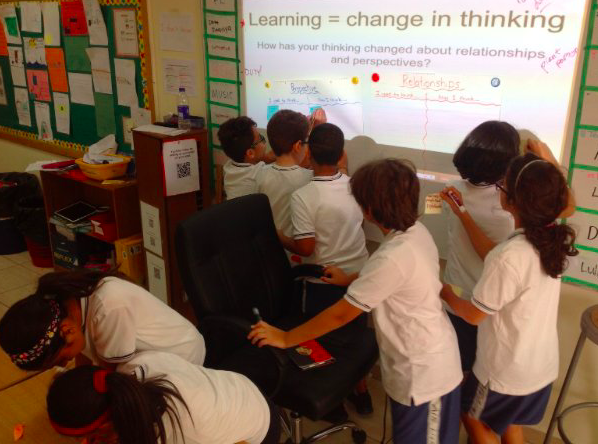
Students synthesized their own big idea from the unit by completing the VTR “Headlines”

Students added new knowledge to their transdisciplinary concept time capsule
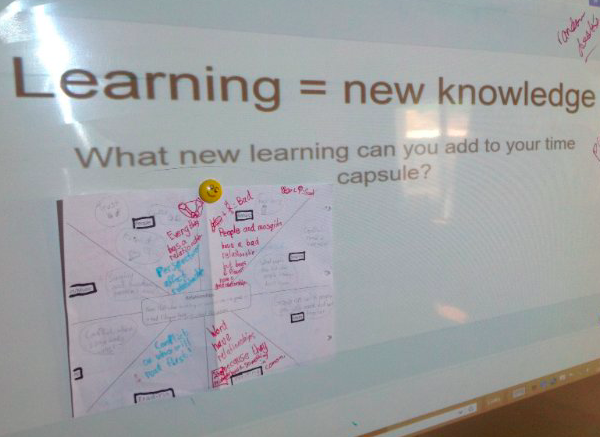
Students applied the concepts learning in our unit to their own life
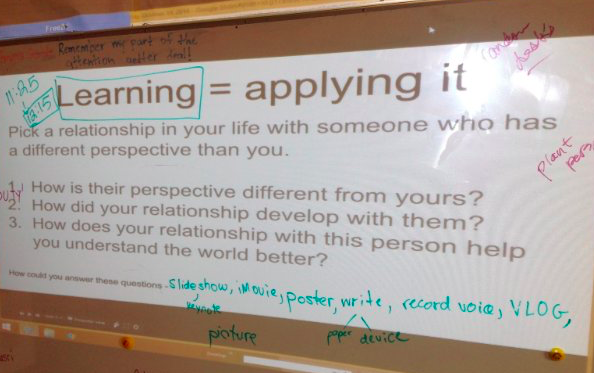
3. Self-Assessment
I’m also a strong believer that the learner themself best understands what they know and don’t know, so it was important to me that they had the first opportunity to assess their own understanding. Students took the four different assessments they had completed and using those learning artifacts, marked on the rubric where they felt they were on our learning spectrum.
The students then gave me their 4 summative activities and their self-assessed rubric and I looked through the same learning artifacts and I added my perspective to the rubric.
Then, I conferenced with each student individually…
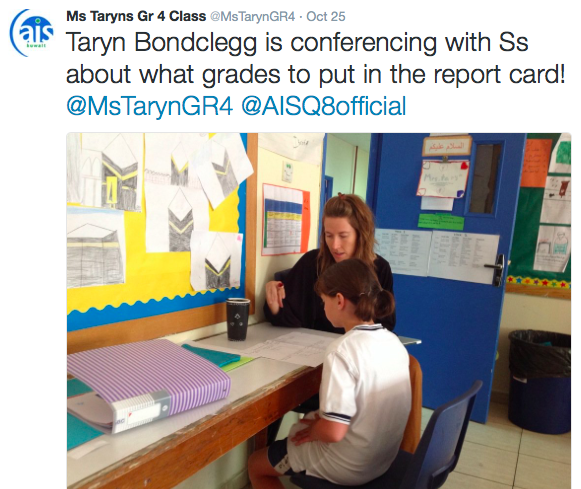
and one of three things happened. Either we had the same perspective and that became their final mark for the unit.
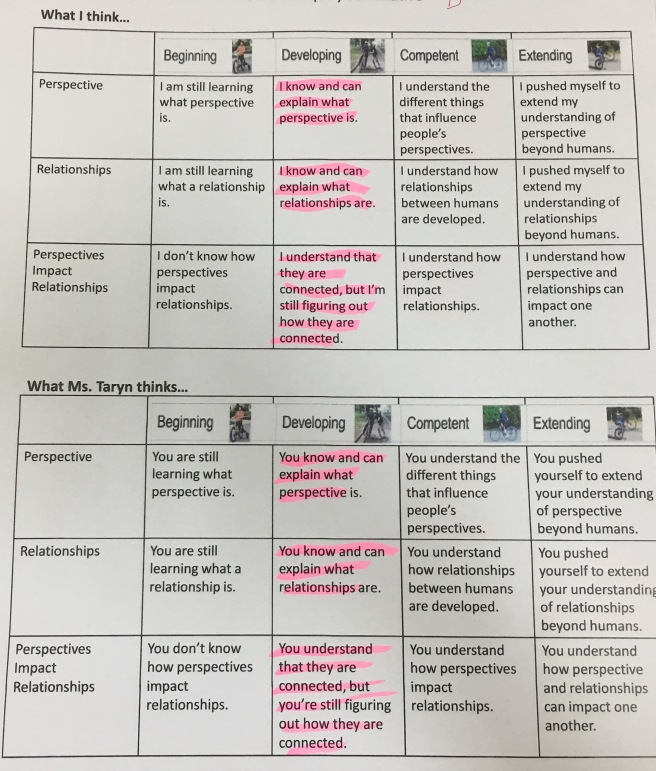
Or if we had different perspective, we chatted to figure out if they new more than they were able to show on the activities, or if they thought they new more but after our chat discovered they actually had more to learn. And in some cases I needed more information because I felt I was unable to assess their understanding based on the activities they completed, so we we chatted about the concepts in the unit and the central idea to find out if they knew more than they showed.
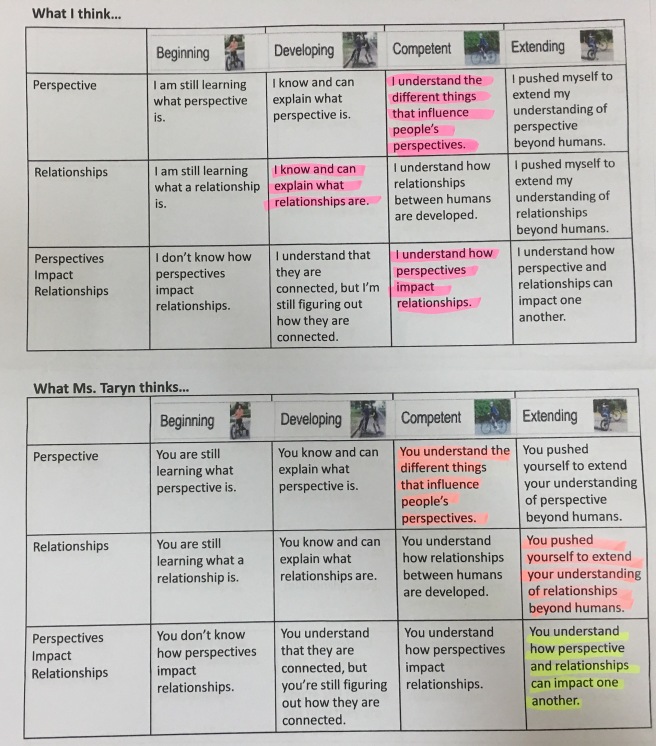
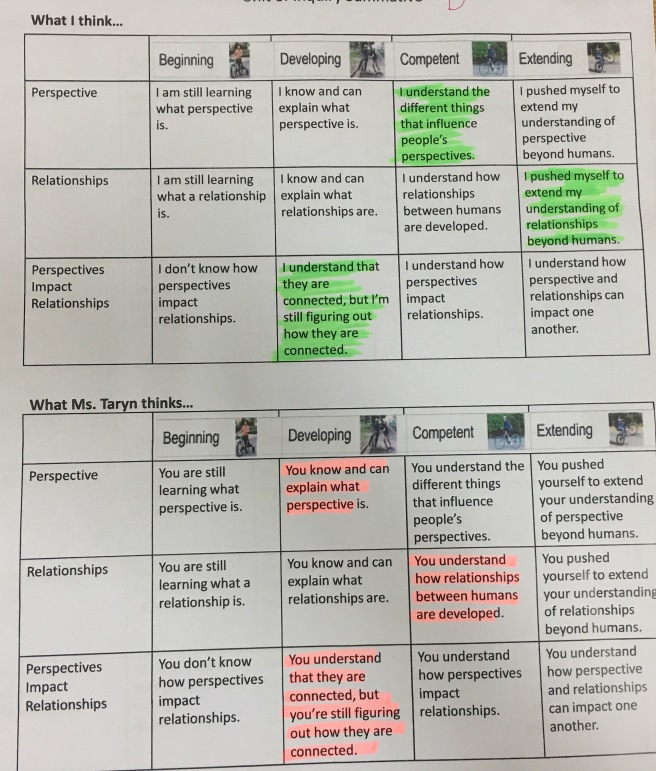
For students who had a competent understanding, we talked about how to extend themselves next unit. For students who were still developing their understanding, we reflected on what blocked their learning this unit and set goals for next unit. For some students that meant changing some learning behaviours (where they sit, who they learn with), for other students it meant applying more effort, and for other students it meant organizing time in addition to class time, for extra learning support from me.
After the conferences were complete, I sent home to rubrics so the students could share them with their parents. I also included information about our summative process on our class blog. Parents were also invited to set-up a three-way meeting with me and their child if they wanted to discuss anything about this particular summative.
All in all, it was a great process! I think my students felt empowered to have a voice in their learning and in the measurement of their learning. I think students felt their perspectives were respected and valued. I think that going through this process after the first unit of inquiry will have positive impacts on the learning that happens in our second unit of inquiry.
And on a personal level, it felt much more humane and much more like a partnership in supporting their learning journey!
